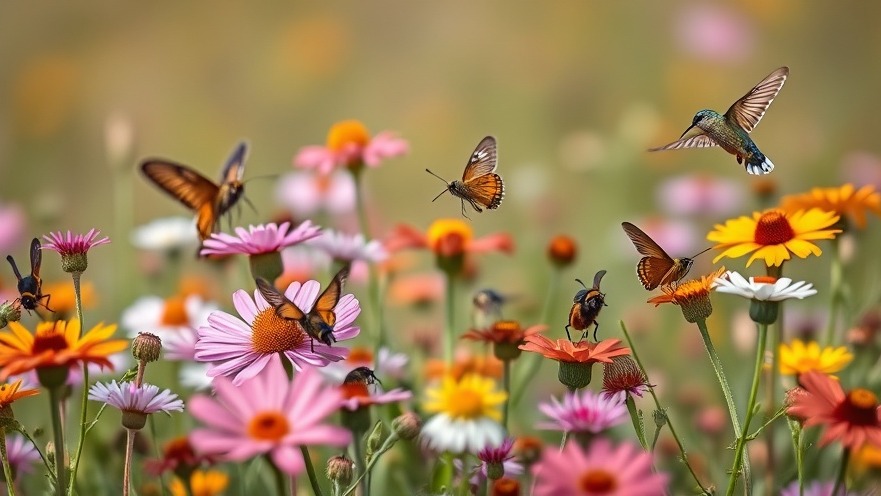
Garden Diversity: Why Every Patch Needs Color
In the quest for a vibrant, sustainable landscape, both homeowners and homesteaders should rethink their gardens. The scene of a female House Finch nibbling on the vibrant blooms of a Red Yucca isn't just a delightful observation; it reflects the essential role of diverse plant life in our gardens. By incorporating colorful and edible varieties, we can create an eco-friendly haven that nourishes not just our communities, but also local wildlife.
The Nutritional Value of a Diverse Garden
Just as the House Finch opts for a variety of blooms rather than relying solely on protein sources, people too can benefit from incorporating diversity into their home gardens. A diet rich in plant varieties promotes health. Think of your garden as a bounty not only for your diet but also for the birds, pollinators, and insects that contribute to a thriving ecosystem. Incorporating fruits, vegetables, herbs, and flowering plants will enhance not only the visual appeal of your garden but also its ability to support local biodiversity.
Eco-Friendly Gardening Practices for a Sustainable Home
Creating a sustainable home design goes beyond just the interior; it starts right outside. Homeowners can adopt eco-friendly gardening techniques that emphasize water conservation, such as xeriscaping, which minimizes the need for irrigation by selecting drought-resistant plants. Another essential practice is composting. Turn your kitchen scraps and garden waste into nutrient-rich compost which can enhance soil health and subsequently reduce the need for chemical fertilizers.
Transforming Your Landscape with Natural Solutions
Modern homesteaders have a significant role to play in advocating for natural landscaping that utilizes native plants. Native plants are adapted to local climates and can survive with minimal effort after establishment, meaning less work for homeowners. They also provide habitats for wildlife. With this approach, consider replacing portions of your lawn with diverse plantings that accentuate colors, textures, and heights, creating a more natural look that still meets the aesthetics of contemporary gardens.
Step-by-Step Implementation of Eco-Friendly Practices
1. **Assess Your Space**: Begin by evaluating your garden area. Identify spots that could benefit from more diversity and investigate which plants thrive in your local climate.
2. **Select Your Plants**: Choose a mix of flowers, vegetables, and fruits that attract beneficial insects and birds. Include those that require minimal maintenance and resources.
3. **Implement Water-Saving Techniques**: Consider drip irrigation systems for efficient water delivery and use mulch to retain moisture and suppress weeds.
4. **Start Composting**: Set up a small compost bin where you can add organic waste from your kitchen and garden, enriching your soil for future planting.
5. **Incorporate Native Plants**: Research available native plants in your area that require less care and are more resilient against local pests and diseases.
Embracing Zero-Waste Practices in Your Garden
While beautifying your garden, consider how you can implement zero-waste practices. This involves using recycled materials for garden beds, rainwater harvesting systems for watering, and creating a habitat for wildlife, thus nurturing an environment that consumes less of our planet's precious resources.
The Future of Eco-Conscious Landscaping
As we advance into an era that prioritizes sustainability, the future of landscaping is bright yet green. Homeowners and homesteaders alike have the power to influence positive change simply by choosing to embrace diversity in their gardens. It represents an opportunity to connect with nature, support local ecosystems, and showcase the beauty of sustainable living.
In closing, the lesson from a simple House Finch feast is profound: our gardens can be tailored not only for our enjoyment but for the greater good. By adopting eco-friendly gardening practices, you can contribute to energy efficiency and create a beautiful, sustainable landscape that diversifies not just your home but the environment as a whole.
 Add Row
Add Row  Add
Add 




Write A Comment